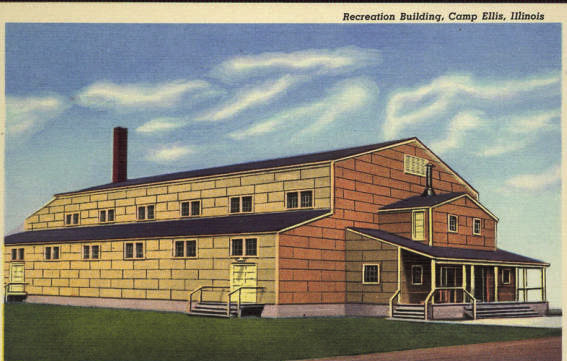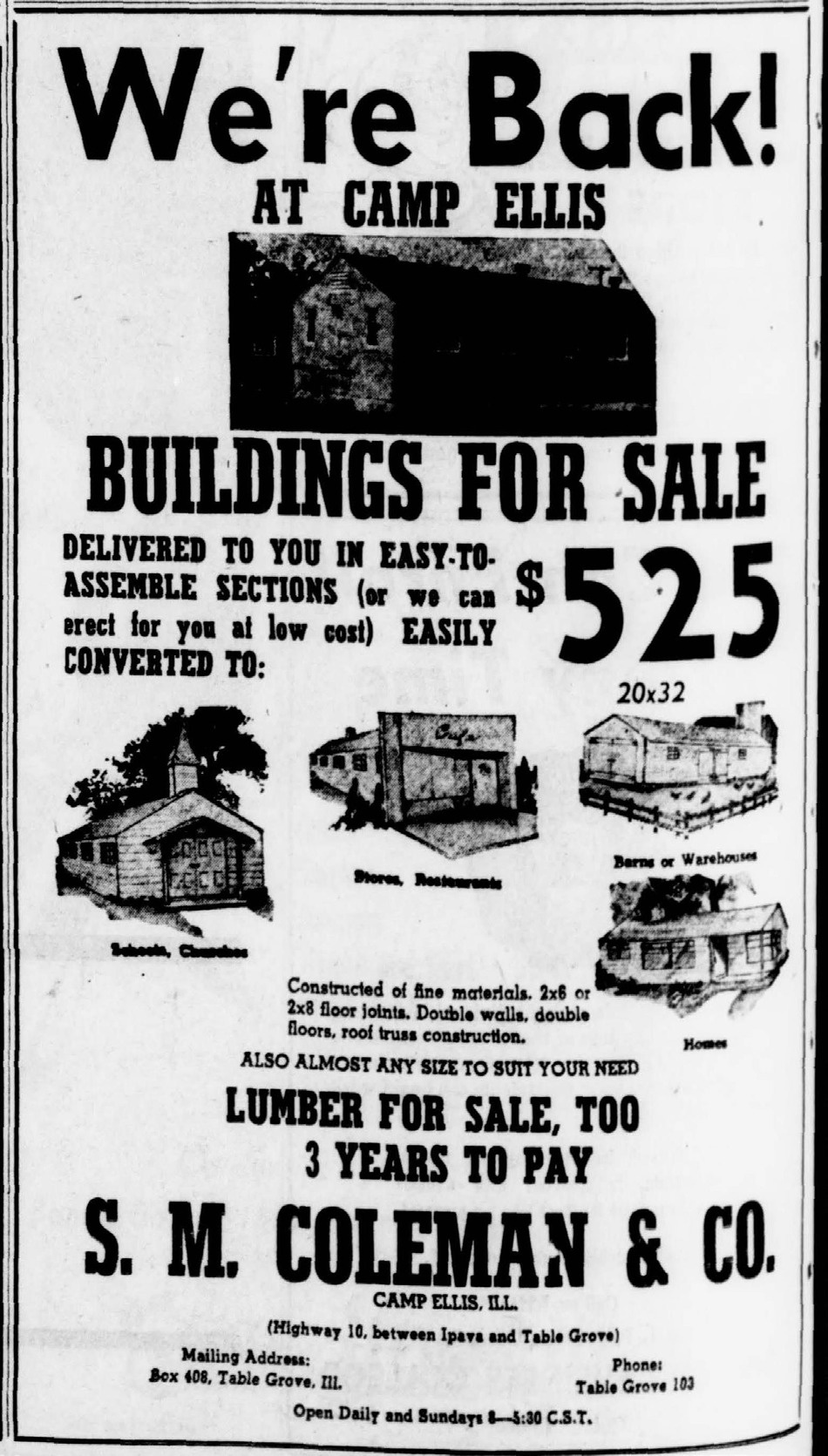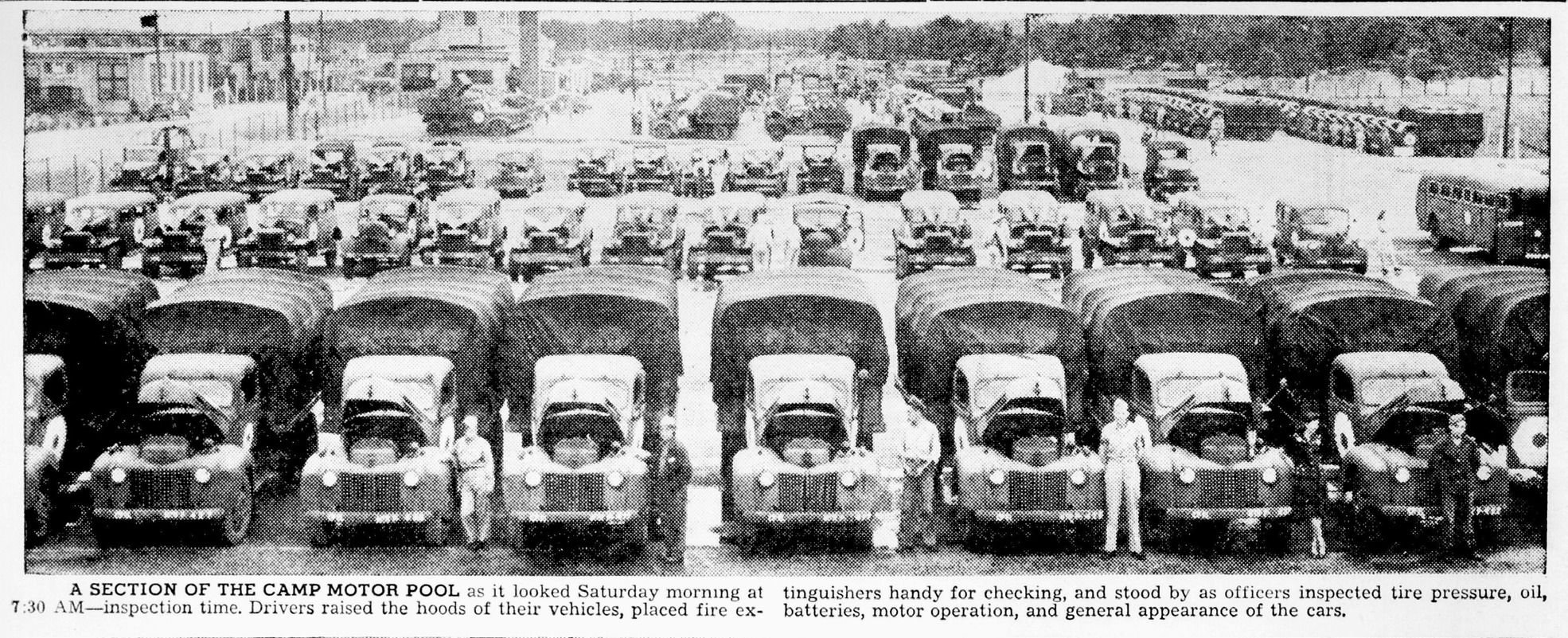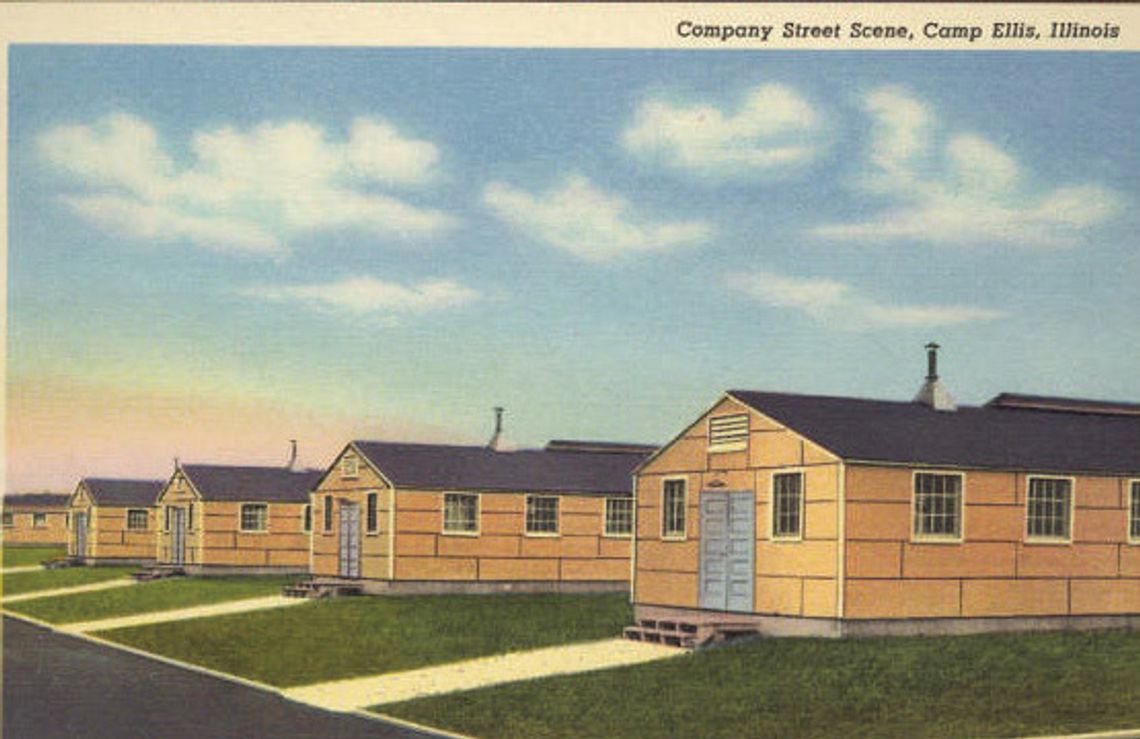By Julie Terstriep, Public Historian
It must have looked like a western ghost town in early 1946 . Empty buildings from Camp Ellis dotted the farm fields north of Route 10 (now Highway 136) between Table Grove and Ipava.
There were 2,200 of them, but just a skeleton crew of personnel remained.
As the years passed, the Illinois National Guard took over the camp, and Chanute Air Force Base used the area for a survival camp. In June of 1950, the General Services Administration began the arduous task of dismantling the camp.
Does anything still exist of Camp Ellis? Has everything been moved, demolished, or torn down to be reused as lumber? Not everything.
Today, the two water towers built in 1942 in a continuous pour of concrete still break the horizon line north of Highway 136. Owned by private individuals, one of the 83-year old water towers has been used for the storage of grain after the war. The Rifle Range still exists, but today, it serves a much less dangerous purpose as a graffiti wall. Correspondence to the Easley Pioneer Museum asking about the Rifle Range usually asks when the graffiti appeared, what it says or represents, etc. There is little interest in its original purpose.
Part of the sewage system still existed until recently.
Besides these structures, only the road signs indicate what happened here: Rifle Range, Main Gate, Airport, Hospital, and Camp Ellis roads still exist today.
A May 16, 1950, memo from the Liquidation Service of General Services Administration stated a spot bid at the site would be held in late June, and “prior to the offering, we will allocate to FSA for school purposes approximately 160 buildings. On the recommendation of the Chief of Chaplains, we will allocate the chapels. We will sell the balance of the building.”
The Southern Illinois University Egyptian newspaper, published November 10, 1950, stated that the unprecedented demand for space on campus was being met by the purchase of 27 barracks from Camp Ellis. The article later says eight barracks were located on South Thompson Street, to be used for a cafeteria and meeting space. “Barracks 2 and 3 will contain the speech department. “
Barracks 3 was made into a “Little Theatre” seating 200 for dramatic productions.
The next three barracks housed the placement, registrars, and statistical services offices. Barracks 7 housed the business administration department offices and classrooms. Barracks 8 was made into general classrooms.
According to a Macomb Daily Journal article of May 10, 1947, SIU wasn’t the only Illinois university to acquire Camp Ellis barracks. Western Illinois Teachers College, later Western Illinois University, also needed space for returning military personnel who would attend college under the GI program.
Camp Ellis barracks became married student housing at WIU. The University of Illinois, Notre Dame University, Illinois College in Jacksonville, and Quincy College (later Quincy University) all had Camp Ellis buildings.
A new Ag Shop at VIT High School was made from sections of an officer’s service center at the camp.
The Hancock County Gun Club’s club house was made out of army barracks from Camp Ellis.
One of the most unique uses of Camp Ellis barracks was written in November 15, 1950 Quincy Herald Whig. The Berry Brothers of Quincy, IL and Oklahoma purchased several 20’ x 100’ buildings for brooder houses in Quincy, Macomb, and Bushnell by Berry Brothers.
They were cut down for ease in transportation, and the Quincy brooder houses were erected on South 36th Street. There are clues everywhere that several Camp Ellis structures still exist.
The gymnasium at the old Plymouth High School in Plymouth, Illinois, was at Camp Ellis, and another gymnasium found its way to Glasford, Illinois. Part of the Colusa, Illinois, school was made from lumber at Camp Ellis.

This is a postcard of Camp Ellis gymnasium. Two of these gyms were later moved to Plymouth and Glasford, Illinois, to serve high schools.

From the Quincy Herald Whig – Buildings at Camp Ellis were advertised for sale to be converted.
In Marjorie Bordner’s book, “From Cornfield to Marching Feet,” written about Camp Ellis, Marilyn Himmel shared, “Wheaton Christian High School has on their campus a chapel which I believe was formerly a chapel at Camp Ellis.”
The former Prisoner of War Headquarters building was bought by Brig. General Richard “Hap” Northern of Quincy and moved southwest of the current airport.
It served many years as a bar and grill known as the Flying Inn. Northern had previously served at Camp Ellis as a soldier, NCO, and Officer until the camp was closed. He purchased the building and moved it, according to his daughter, Colonel Natalie Northern (RET) because of his fond memories of Camp Ellis.
Besides the buildings, there was a huge inventory of typewriters, mimeograph machines, Mess Hall dishes, cutlery, cooking pots and pans, beds, and heating stoves left over from the camp. A photo from July 6, 1945, Camp Ellis News clearly shows at least 72 twoand- a-half-ton trucks, cargo trucks, and numerous jeeps, buses, and other vehicles at the camp motor pool. What happened to these things?

The Flying Inn located near the Quincy Municipal Airport. This former Camp Ellis POW headquarters had a second life as a bar and grill. Pictured is Brig. General Richard E. “Hap” Northern (RET), previous owner of the building.
Since the closing of the camp, rumors have spread that trucks, jeeps, and tanks were buried in ravines and covered with dirt on Camp Ellis property. To my knowledge, no one has ever seen or reported the remains of these vehicles in the past 80 years on the former Camp Ellis grounds.
In the early 1990s, the Army Corps of Engineers began a survey of the ground to look for unexploded ammunition and environmentally hazardous material such as used motor oil from the motor pools. During their extensive work, they did not find any buried vehicles.
Comprehensive reports for this project and the possible cost of clean up of those materials is available for your reading pleasure at the Easley Pioneer Museum in Ipava, IL or at Archives at the Western Illinois University library. The Army Corps of Engineers estimated the clean up of the area could cost as much as the original construction price of $25 million!
Much of what was used at the camp was sold at public auction. The Easley Pioneer Museum Camp Ellis Collection in Ipava houses a former pie safe, barracks bed, cooking pot, heating stove, desk, typewriter, and a piece of steel landing mat that the former owner used to decorate their flower bed in town. Pieces of metal are always working their way up through the soil. A farmer in the area once complained about how a fork had worked its way up and gotten stuck in his tractor tire, causing it to deflate!
To get a clear idea of what happened to this material, let’s consider what it was like during the war and the postwar period. First, by early 1942, food was rationed to Americans. Coffee was rationed to one pound every five weeks. Other rationed foods included meat, lard, shortening, cheese, butter, margarine, processed foods, dried fruits, canned milk, jams, jellies, and fruit butter.
Typewriters, bicycles, shoes, rubber footwear, silk, nylon, fuel oil and stoves were added to the list. Clothing manufacturers in 192 were ordered to comply with new rules about the production of clothing. They stated hems must be shorter, lapels and sleeves narrower, pockets must be fewer, and hoods, cuffs, pleats and frills were banned to reduce civilian cloth consumption for military resources such as uniforms, parachutes, and other military applications.
With rationing in mind and ingrained in the lifestyle of Americans, it isn't easy to believe civilian employees and military personnel stood by while the items from the camp were needlessly buried. Most likely, these items were sold, recycled, repaired, and reused by federal and state governments, and food products were used to feed those in need.
If you have any information about the items from Camp Ellis, are interested in knowing more about the history of the camp, or just want to find out more, please feel free to email [email protected].

July 6, 1945, Camp Ellis News, Inspection of the camp motor pool shows at least 72 two-and-a-half ton trucks, jeeps, and cargo trucks.









